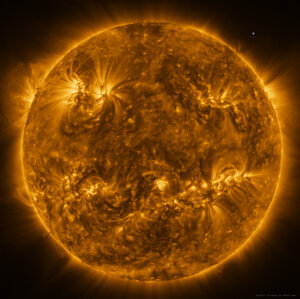Accept all cookies Accept only essential cookies See our Cookie Notice

About ESA
The European Space Agency (ESA) is Europe’s gateway to space. Its mission is to shape the development of Europe’s space capability and ensure that investment in space continues to deliver benefits to the citizens of Europe and the world.
Highlights
ESA - United space in Europe
This is ESA ESA facts Member States & Cooperating States Funding Director General Top management For Member State Delegations European vision European Space Policy ESA & EU Space Councils Responsibility & Sustainability Annual Report Calendar of meetings Corporate newsEstablishments & sites
ESA Headquarters ESA ESTEC ESA ESOC ESA ESRIN ESA EAC ESA ESAC Europe's Spaceport ESA ESEC ESA ECSAT Brussels Office Washington OfficeWorking with ESA
Business with ESA ESA Commercialisation Gateway Law at ESA Careers Cyber resilience at ESA IT at ESA Newsroom Partnerships Merchandising Licence Education Open Space Innovation Platform Integrity and Reporting Administrative Tribunal Health and SafetyMore about ESA
History ESA Historical Archives Exhibitions Publications Art & Culture ESA Merchandise Kids Diversity ESA Brand Centre ESA ChampionsLatest
Space in Member States
Find out more about space activities in our 23 Member States, and understand how ESA works together with their national agencies, institutions and organisations.
Science & Exploration
Exploring our Solar System and unlocking the secrets of the Universe
Go to topicAstronauts
Missions
Juice Euclid Webb Solar Orbiter BepiColombo Gaia ExoMars Cheops Exoplanet missions More missionsActivities
International Space Station Orion service module Gateway Concordia Caves & Pangaea BenefitsLatest
Space Safety
Protecting life and infrastructure on Earth and in orbit
Go to topicAsteroids
Asteroids and Planetary Defence Asteroid danger explained Flyeye telescope: asteroid detection Hera mission: asteroid deflection Near-Earth Object Coordination CentreSpace junk
About space debris Space debris by the numbers Space Environment Report In space refuelling, refurbishing and removingSafety from space
Clean Space ecodesign Zero Debris Technologies Space for Earth Supporting Sustainable DevelopmentApplications
Using space to benefit citizens and meet future challenges on Earth
Go to topicObserving the Earth
Observing the Earth Future EO Copernicus Meteorology Space for our climate Satellite missionsCommercialisation
ESA Commercialisation Gateway Open Space Innovation Platform Business Incubation ESA Space SolutionsEnabling & Support
Making space accessible and developing the technologies for the future
Go to topicBuilding missions
Space Engineering and Technology Test centre Laboratories Concurrent Design Facility Preparing for the future Shaping the Future Discovery and Preparation Advanced Concepts TeamSpace transportation
Space Transportation Ariane Vega Space Rider Future space transportation Boost! Europe's Spaceport Launches from Europe's Spaceport from 2012Latest
Solar Orbiter’s widest high-res view of the Sun
Thank you for liking
You have already liked this page, you can only like it once!
Five years into its mission, Solar Orbiter stuns again with this detailed view of the Sun. What you see is the Sun’s million-degree hot atmosphere, called the corona, as it looks in ultraviolet light.
Dive in and explore the hot plasma (charged particles) caught in the Sun’s messy magnetic field. Can you spot the glowing coronal loops around active regions, and the darker, cooler filaments and prominences?
Obtaining such a detailed image is no easy feat. On 9 March 2025, at around 77 million km from the Sun, the Solar Orbiter spacecraft was oriented to point to different regions across the Sun in a 5 x 5 grid. At each pointing direction, the Extreme Ultraviolet Imager (EUI) instrument captured six images at high resolution and two wide-angle views.
The image you see here combines a whopping 200 individual images into the widest high-resolution view of the Sun yet. (See previous full Sun views here.)
Solar Orbiter is a space mission of international collaboration between ESA and NASA. The Extreme Ultraviolet Imager (EUI) instrument is led by the Royal Observatory of Belgium (ROB).
[Image description: The Sun looks like a warm yellow sphere with a surface covered with glowing messy hair. The yellow glow extends to the edges of the image, with some regions brighter than others. Many bright yellow arcs stick out from a wide band around the Sun’s equator. A darker region stands out across a roughly horizontal line near the Sun’s south pole. The bright arcs and some darker material can also be seen around the Sun’s edges.]
[Technical details: This large image was assembled from images taken between 13:06 and 17:31 UTC (14:06–18:31 CET) on 9 March 2025 by Solar Orbiter’s Extreme Ultraviolet Imager at a wavelength of 17.4 nanometres. Solar Orbiter was viewing the Sun from a latitude 11.4° below the equator at a distance of around 77 million km. The final image is 12544 x 12544 pixels in size, corresponding 6171.6 x 6171.6 arc seconds or 2325.5 x 2325.5 million km. The Sun, which has a diameter of 1.4 million km, spans around 7505 pixels and 3692.6 arc seconds.]
-
CREDIT
ESA & NASA/Solar Orbiter/EUI Team, E. Kraaikamp (ROB) -
LICENCE
CC BY-SA 3.0 IGO or ESA Standard Licence
(content can be used under either licence)

Making a mosaic of the Sun

Magnetic regions on the Sun viewed by Solar Orbiter

The Sun in high resolution

Geological bounty – annotated















 Germany
Germany
 Austria
Austria
 Belgium
Belgium
 Denmark
Denmark
 Spain
Spain
 Estonia
Estonia
 Finland
Finland
 France
France
 Greece
Greece
 Hungary
Hungary
 Ireland
Ireland
 Italy
Italy
 Luxembourg
Luxembourg
 Norway
Norway
 The Netherlands
The Netherlands
 Poland
Poland
 Portugal
Portugal
 Czechia
Czechia
 Romania
Romania
 United Kingdom
United Kingdom
 Slovenia
Slovenia
 Sweden
Sweden
 Switzerland
Switzerland
























